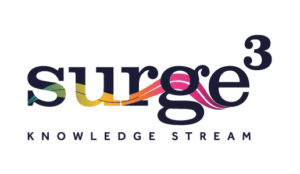How many segments is too many? At some point we always have this conversation. Clients usually find 4 too few and 12 too many (leave aside that it’s not about how many but rather how you prioritise). So the spectre of ‘segments of one’ leaves us scratching our heads – an existential crisis for those of us who get paid to package the market up into somewhere between 4 and 12 homogenous groups; and paralysing for clients who now have (pick a big number) a million segments of one. But is it? And what does ‘segments of one’ actually mean?
In trying to get our collective heads around ‘segments of one’ we keep coming back to the difference between segmentation and profiling – traditionally profiling leverages a mass of data to add flesh to the bones of a segmentation – the segmentation has distilled the complexity inherent in all markets down to something manageable. But, so the argument goes, the processing power of IT, and the ability for brands to now get much closer to their customers etc. etc. makes the segmentation step ‘redundant’ as we no longer need to distil complexity, but rather embrace it. This is the hyperpersonalization argument.
In a piece for ‘Think with Google’ Unilever’s Chief Marketing and Communications Officer, Keith Weed, cited the mobile phone as the driving force behind an empowered consumer – who could disagree – and that its now “driving a hyper segmentation revolution”, and Unilever to “a future where we will build brands in segments of one”.
So let’s think about this in terms of a company that makes things. If my business is making ‘things’ at scale – physical mass customisation or hyperpersonalization is very difficult to do. Scale is important – if I make high spec bicycles, I could customise these to individual taste, but I might make 10, 100, 1000, 5000 a year. What if I make 20million units of something? Whether we are trying to develop strategy or drive something like NPD – we still need to distil complexity into something manageable and useful. Of course Keith Weed isn’t suggesting (I think) that using hyper segmentation Unilever is going down a mass customisation route.
The reality is that we will still have between 4 and 12 segments to allow us to pragmatically manage the complexity and develop our product portfolio and core brand foundations BUT within those segments – data and the ability to now have a one-to-one dialogue with consumers will develop a unique brand experience. Not necessarily one that the brand owner controls but still we can see this one to one relationship as ‘segments of one’. So for a standardised mass market product we may develop individualised brand conversations but we are limited by the nature of the product and the way we go to market. Organisations like Unilever are (it would seem – I have no direct knowledge) looking to developed one-to-one relationships with their consumers – off the back of a mass market product offer. Is this based on profiling within an existing segmentation frame – sort of tactical hyper segmentation within a segmentation? So what is the ‘segment of one’? It is a question of both capability and practicality.
But what about those organisations whose products are intangible …. say Netflix or many financial services companies … companies that can be characterised as having a lot of data on each individual customer and the ability to reconfigure their product offer in an (effectively) infinite number of ways. So they can ‘just’ profile their customer and offer suitable, customised packages (enabled by technology) – they don’t need the intervening step of a consolidating segmentation. Right? Probably not. We are getting much better at trawling data for attitudinal and behavioural cues, and using this knowledge to inform marcoms and other interactions but, to inform strategy, I will bet these organisations are still using some kind of consolidating framework (anyone from NetFlix, please feel free to set me right). Managing complexity is expensive. To embrace complexity to the extent that segments of one would dictate, means redefining what we mean by ‘strategy’. If traditionally strategy has equated to ‘making choices’ – in this new world, the choices are no longer made by the organisation, but rather by the customer. This also assumes that the organisation is less resource constrained – presumably this is a function of technology.
Even as we get better at mining the increasing amounts of data available to us, there is still a long way to go in terms of maximising the value and utility to the customer of this kind of profiling. NetFlix’s ‘Top Picks For …’ seems to me to be little better than random choice – based on watching an episode of 70’s British sitcom Porridge, the recommendation that I might like to watch Top Gear would seem a tenuous link (to me … and that’s the whole point).



